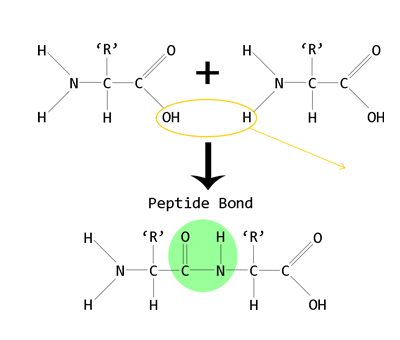Peptides
Peptides Assignment Help | Peptides Homework Help
Peptides
The terms peptide, polypeptide and protein have not been precisely defined. According to one usage the term peptide is employed when the chain consists of 2-20 amino acid residues. Chains containing 20-50 amino acid residues are called polypeptides, and compounds having more than 50 amino acid residues are called proteins.
A dipeptide is formed is formed when two amino acids are linked together by a peptide bond with the elimination of a water molecule. The condensation reaction occurs between the –NH2 (amino) group of one amino acid and the –COOH (carboxyl) group of the other. The dipeptide has an amino group at the end and a carboxyl group at the other. These groups are capable of reacting with amino and carboxyl groups of other dipeptides, given rise to long polypeptide chains. By convention the amino group is written to the left and the carboxyl group to the right when recording the structure of a peptide.
A dipeptide consists of two amino acid residues. The term ‘residue’ denotes the amino acid units minus one molecule of water. It is denoted by the ending ‘yl’ to the name of the name amino acid. Thus the dipeptide formed by linking of the amino acids glycine and alanine is called glycyl-alanine. A peptide chain formed by the linking of the amino acids glycine, aspartic acid, lysine, glutamine, arginine, histidine and alanine. Since this method is cumbersome, especially for the larger polypeptides, shortened forms using the three-letter or one-letter code for amino acids are usually employed.
Three-letter code NH3 + Gly-Asp-Lys-Gln-Arg-His-Ala-COO-
One letter code NH3 + -G-D-K-Q-R-H-A-COO-
Peptides may be found in the free state, as intermediates in protein degradation, or may be attached to carbohydrates to form mucopeptides and glycoproteins.
